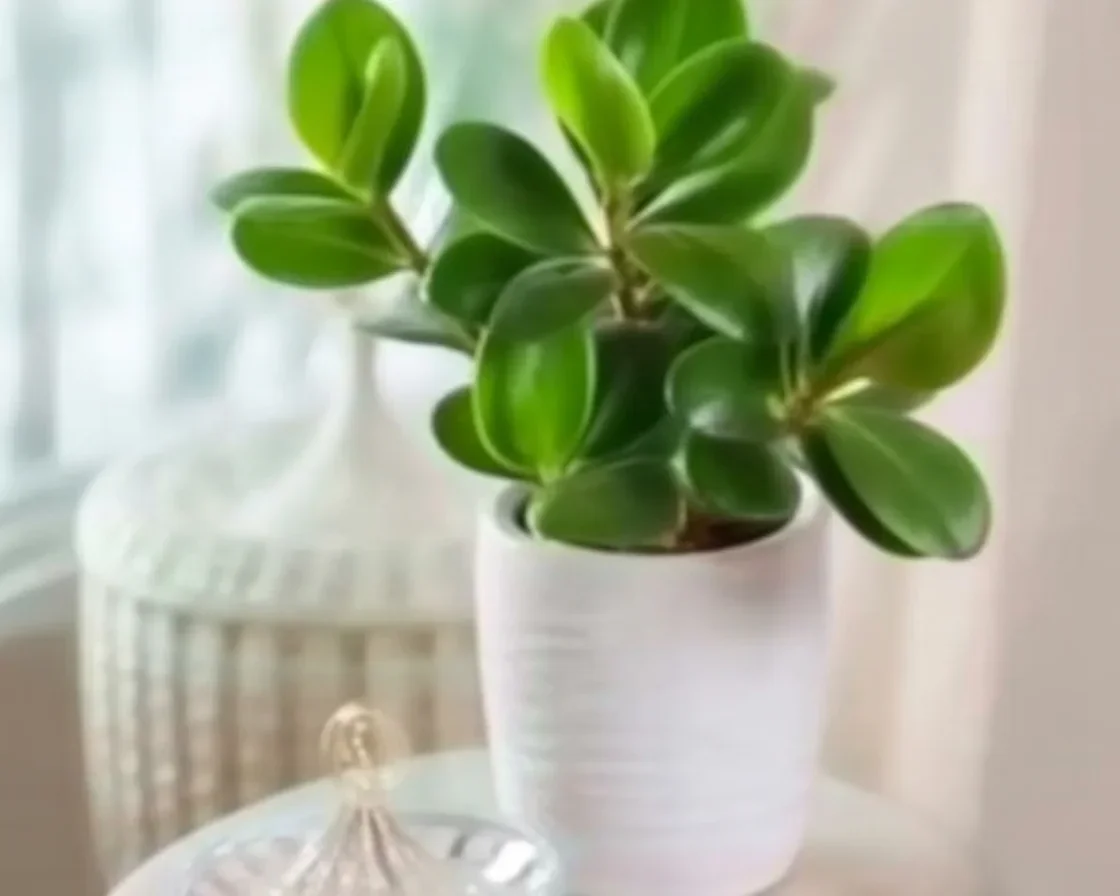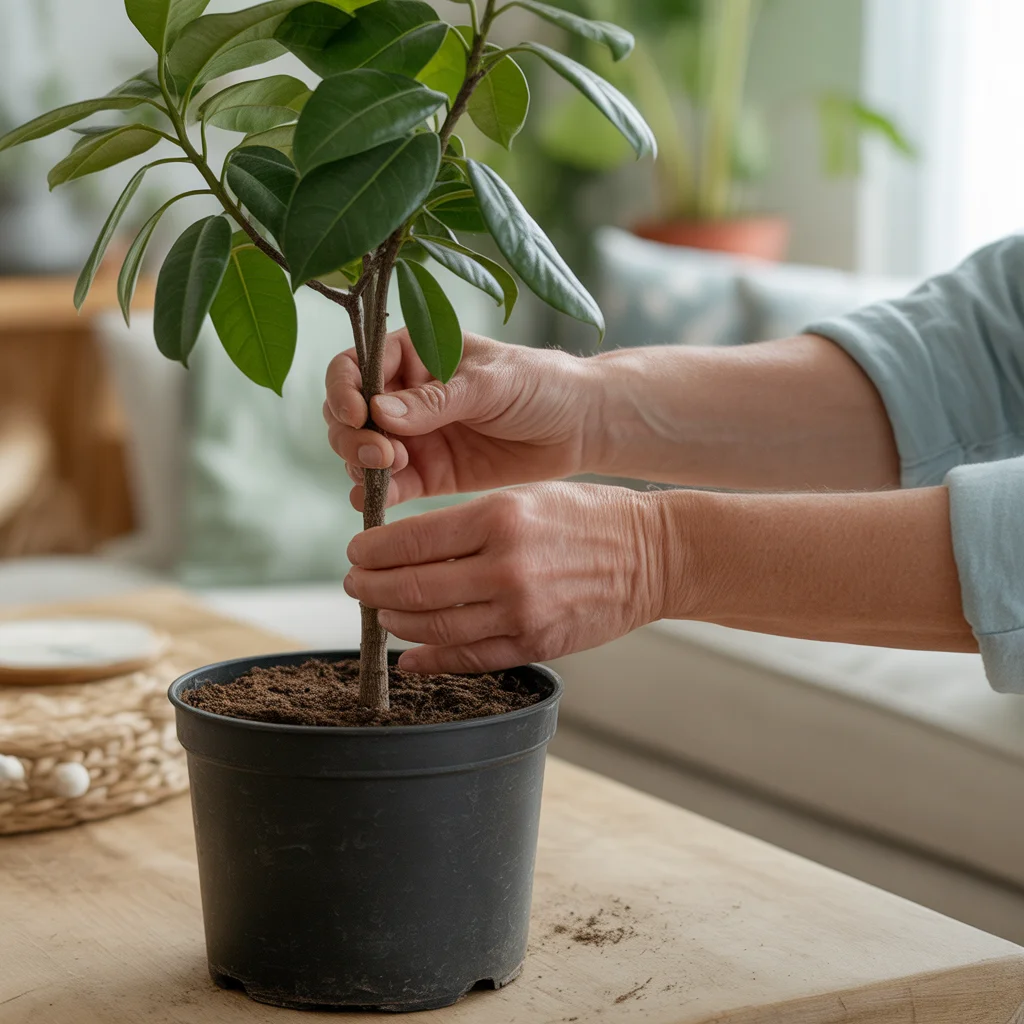Ugh, AUTOGRAPH TREE Care can almost make you want to pull your hair out sometimes, right? You bring home this shiny-leafed, cool tropical beauty, and suddenly things just—well—get weird. I kept muttering, “Why’s it dropping leaves?” or “Did I just overwater again?” Been there, got the T-shirt… and a learning curve. Don’t sweat it, though. I’ll walk you through my own little playbook for this stubborn but rewarding plant, and if you ever need a sanity break, check out this easy Carmen Jane plant care guide or a deep dive into China Doll plant tips—they’re solid, even if you’re still holding a leaf and squinting.
Table of Contents
Autograph Tree Care
First up, let’s just call it what it is: Clusia rosea, but everyone’s got their own nickname for it. If you want a plant that can handle a few mistakes, this one’s a decent bet. But hey, they still need some real attention. Give your autograph tree bright, indirect light (and yes, they can handle morning sun most days, but too much direct heat fries them).
Don’t let the soil sit like soup. I ruined my first plant by letting water pool at the bottom—total rookie move. Use a chunky potting mix with good drainage. Let the top inch or two of soil dry out before watering again. It seems fussy but trust me, nothing beats those glossy leaves once you figure it out.
And oh—humidity helps. If your home gets dry, try misting now and then. Old school trick, but my plants perk up every time.
If you prefer plants with fewer demands, you might want to also consider a happy Spider Plant or even try some easy ZZ Plant care. Both are great for boosting confidence if the autograph tree feels tricky.
How do you take care of an autograph plant
Alright, so how do you really keep it alive, long term? Here’s my “keep it alive, don’t shame yourself” rundown. Place your autograph tree near a window where it gets lots of filtered sunshine. Not all-day sun, just enough for those big paddle-shaped leaves to soak up.
Let’s chat watering. (This is where we all mess up first.) Less is more—water deeply only when the top part of the soil feels dry. I use my finger, nothing fancy. Never let it stand in a soggy tray!
Give it a good snack every month or so—mild, balanced fertilizer will do. Skip winter, though. The plant’s got enough going on then.
One weird thing: wipe the leaves with a damp cloth now and then. They get that dusty look, and honestly, it helps the plant “breathe” better.
I accidentally left one by a cold AC draft—bad idea. Keep it away from super chilly spots if you can help it. 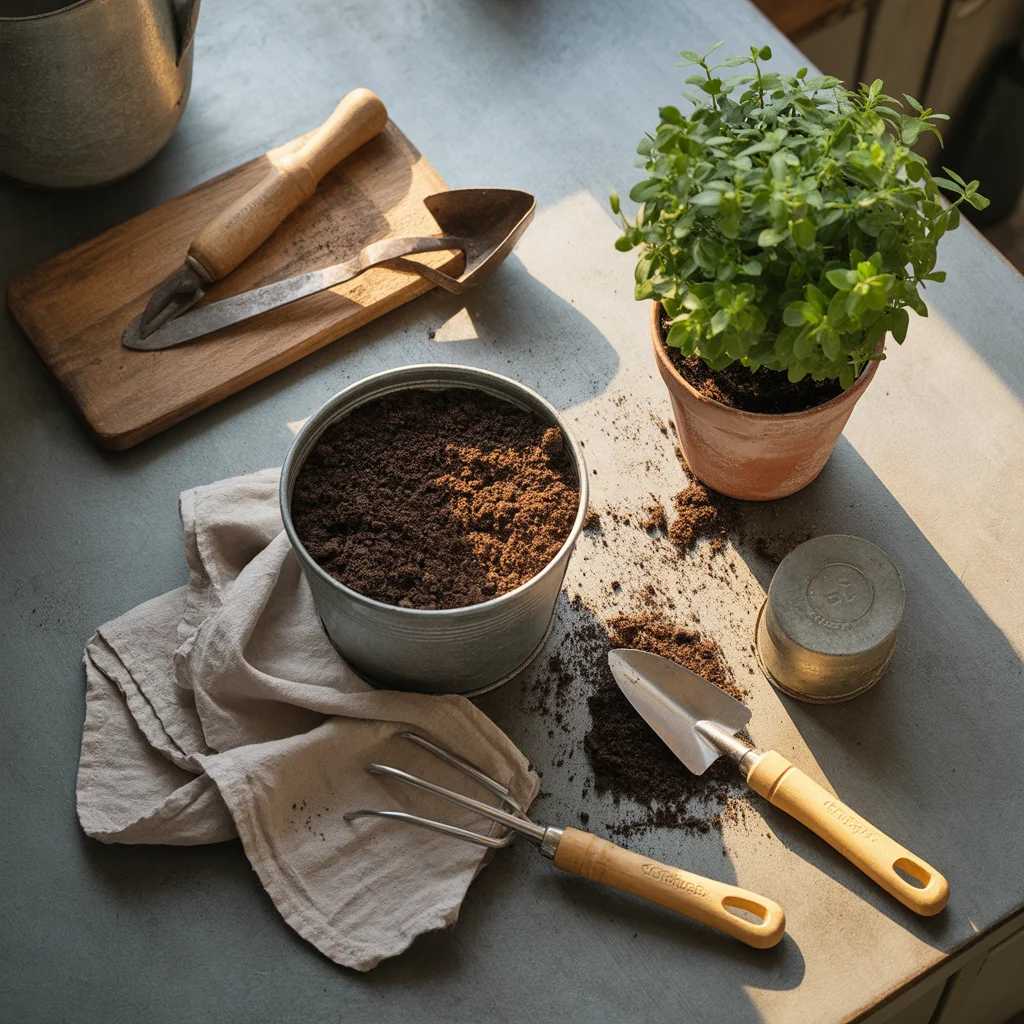
Propagating the Autograph Tree
This is the fun part—more plants for free! I mean, who’s not jazzed about that? Take a healthy stem cutting (around 6 inches is plenty), strip the leaves from the bottom, and stick it in water or straight into soil. I prefer water so I can watch roots pop—feels oddly satisfying, you know? Keep the new cutting somewhere warm, with dappled light. In a few weeks, you’ll see little roots, like magic. Want more plant baby tips? I had loads of fun with this pothos guide and honestly, propagation is basically the same idea for lots of houseplants. 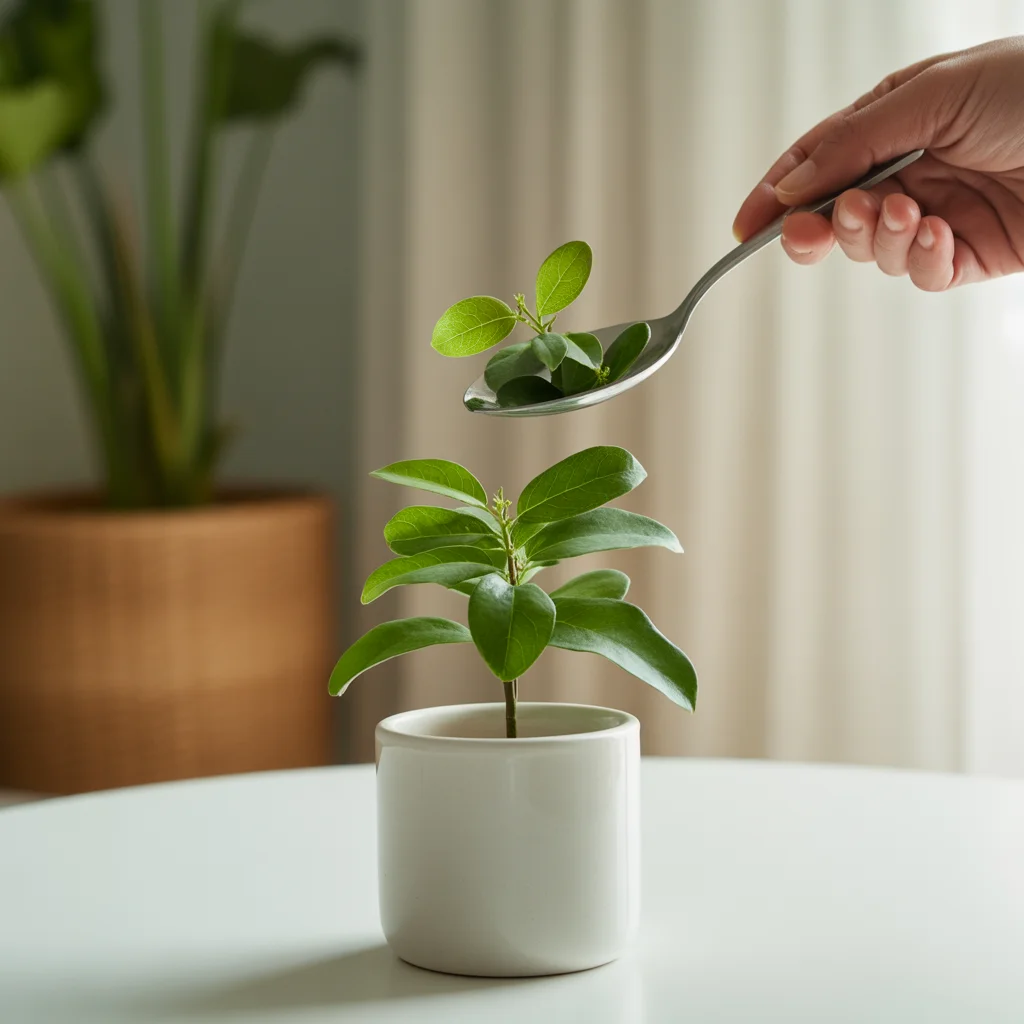
Common Pests
Look, no matter how clean I keep my houseplants, something creepy always sneaks by. For the autograph tree, mealybugs are public enemy number one—tiny, fluffy, gross little monsters. Scale shows up too, looking like weird dots.
You see sticky stuff or cottony bits? Time to act, friend. Dab rubbing alcohol on a Q-tip and wipe those bugs off the leaves and stems. Repeat. Again, and again. If they keep coming back, grab a gentle insecticidal soap.
Fungus gnats sometimes pop up if I water too much. (Yet another reason to let your soil dry.) Just keep your eyes peeled for anything odd, and jump on it fast.
“My Clusia survived a gnarly mealybug invasion after I followed the Q-tip trick—now it’s thriving and almost double in size!”
– Marisol, Miami
Potting and Repotting
Autograph trees will actually put up with tight quarters, but every year or two, think about giving them some more elbow room. My first repot was a trainwreck—dropped soil everywhere. These tips might help:
- Pick a container a couple inches bigger, nothing wild.
- Use chunky mix (orchid bark mixed in is gold).
- Knock off extra soil, but be gentle with the roots.
- Water lightly, not too much on repotting day!
Getting a bit messy is basically unavoidable though. Just have an old towel handy, and accept soil on the floor as “part of the process.”
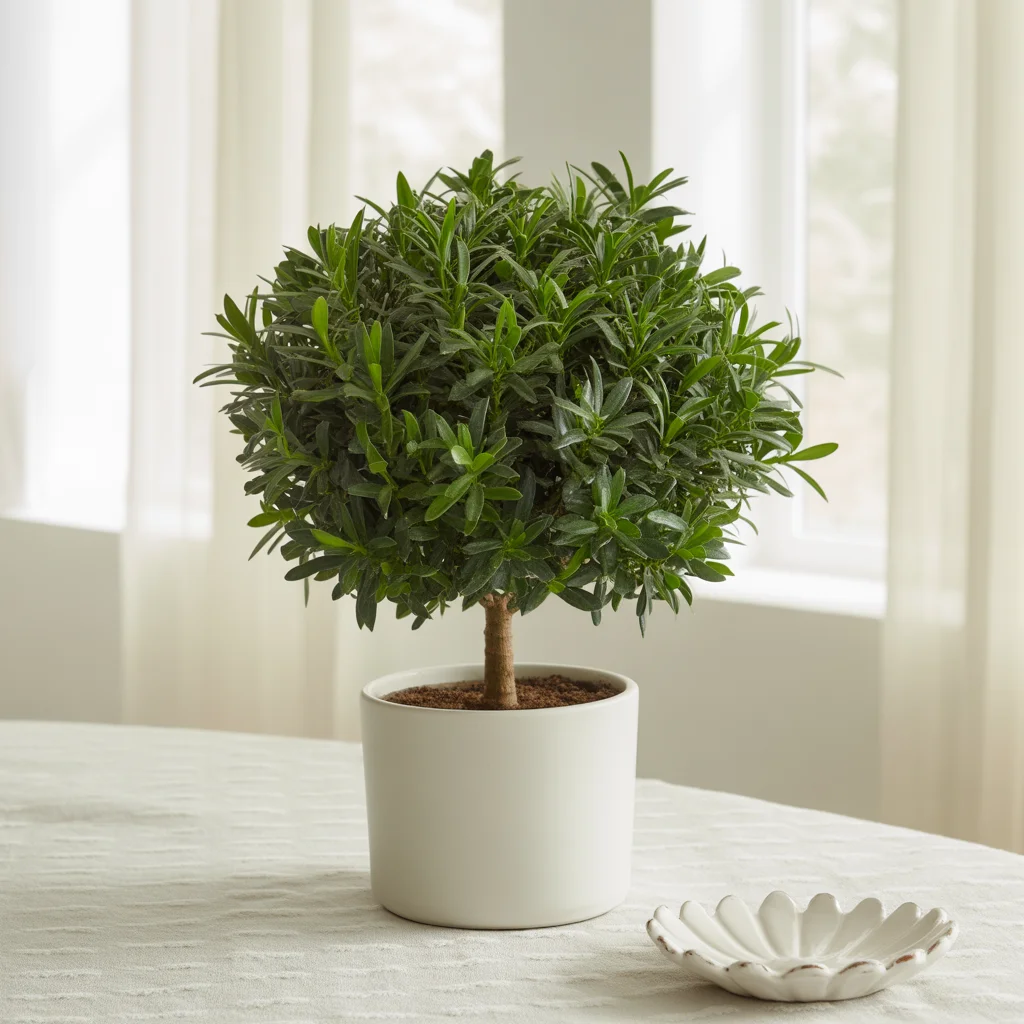
Growing Clusia Outdoors
Lucky enough to live somewhere toasty, like coastal Florida? Outdoors, this plant gets huge. Autograph trees can take full sun if you introduce them slowly, otherwise the leaves scorch—learned that one the hard way.
Best spot is somewhere they get morning rays and afternoon shade. Water them regularly, especially during heat waves, but don’t drench them every day.
I saw someone use them as a living privacy hedge, and gee, did those plants ever thrive. Humidity and rain help, but just watch for cold snaps in winter. If your climate is more like mine and you want another bold, leafy plant for the garden, check these elephant ear care tips.
How much sun does an autograph plant need?
Alright, here’s the deal: autograph trees love bright, indirect sun the best. If you stick them right in a south-facing window, they’ll protest (leaf burn, crisp edges, yikes). North or east windows are usually perfect. Outdoors? Dappled shade is the sweet spot.
They’ll let you know if they need more—leaves start looking pale and sad. When it doubt, more light, less harsh midday rays.
What temperature do autograph trees like?
My plants are happiest above 65°F, honestly, and they really hate cold drafts. Anything chilly or below 55°F and the leaves curl, fall off, or just plain give up. So, if you’re the keep-your-house-cold-in-the-summer type, you might not be the autograph tree’s soulmate. They’re basically little tropical divas about warmth.
A tip? If nights get a little nippy, move them away from windows, or use a light fabric cover if they’re outside. Keep things steady and they’ll reward you with growth spurts every spring and fall.
Why is my autograph plant dying?
Oh, the heartbreak—That moment you wonder if it’s time for a plant funeral. Wilting, yellow leaves, mushy stems… I’ve panicked more than once, trust me. Usually, the problem is too much water or, okay, the plant’s freezing. Check your drainage, move them to better light, and cut off dead bits.
Sometimes it’s pests. Give it a real close look under the leaves. Usually, with some TLC, you can get it back from the brink. (But if not? It happens. You’re not alone.)
Bring Your Autograph Tree Back to Life—Or Just Keep It Alive!
Crazy as it sounds, AUTOGRAPH TREE care really does get easier with a bit of practice. You’ve got all the basics in your back pocket now—light, warmth, smart watering, the occasional leaf spa day, and solid pest patrol. I always say, the best plant parent is the one who keeps trying, not the one with perfect leaves. And if this plant drama sparked your curiosity for more, check out this no-fuss guide on How to Grow and Care for Autograph Tree or explore what makes peace lily care and snake plant tips so forgiving. Go on, plant lovers—just give it a go. You’ll be showing off those signature leaves in no time. 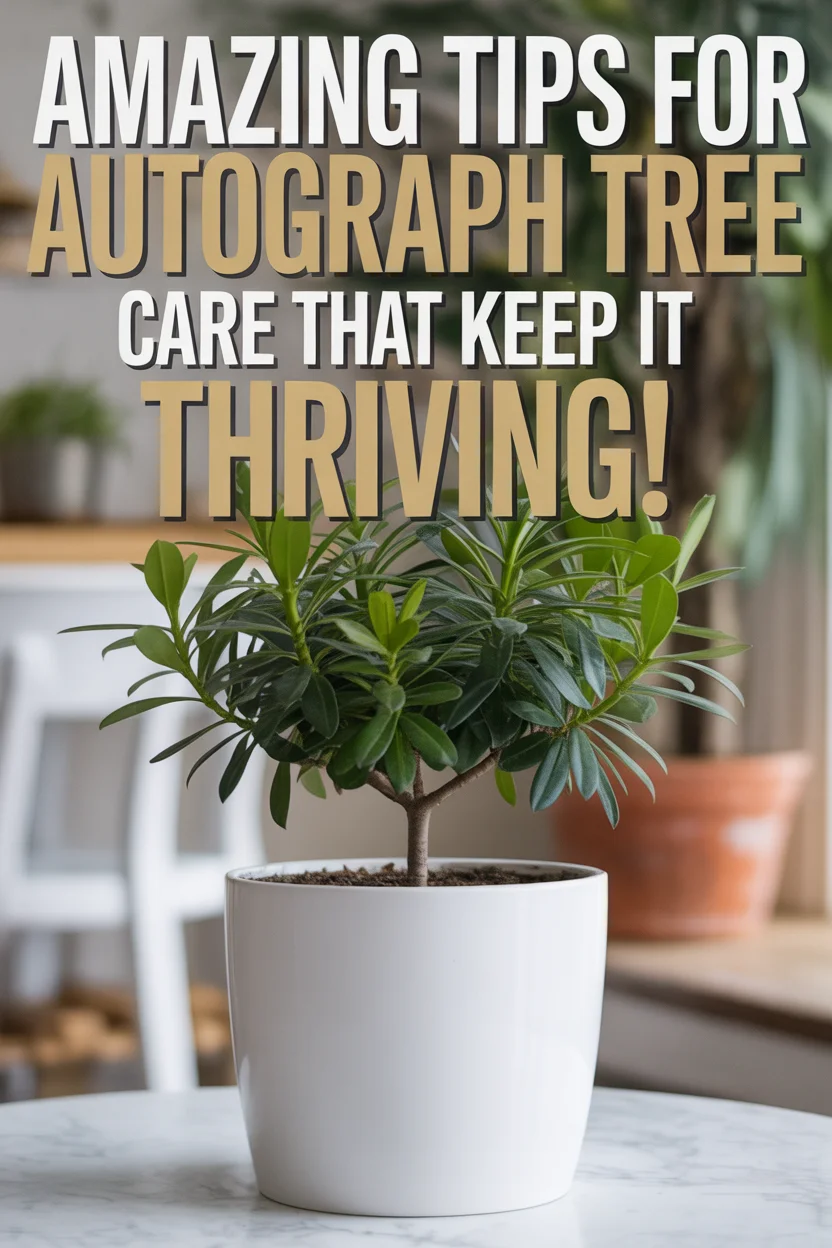
Common Questions
Q: Can I write on the autograph tree’s leaves for fun?
A: Absolutely! That’s why people call it the “autograph tree.” Use a blunt stick, not a knife—just enough to leave a mark without slicing.
Q: How big will it get indoors?
A: Indoors, expect about 5-6 feet max, if you’re lucky and patient. Outdoors? Sky’s the limit!
Q: How often do I water?
A: Only when the top couple inches of soil are dry. No set schedule. Your finger is the best plant tool.
Q: Brown tips on leaves—what’s the deal?
A: Most likely dry air or fertilizer buildup. Try misting more or watering with filtered water.
Q: Is the autograph tree safe around pets?
A: It’s mildly toxic if munched, so keep it up high if your cat is a leaf-muncher.
